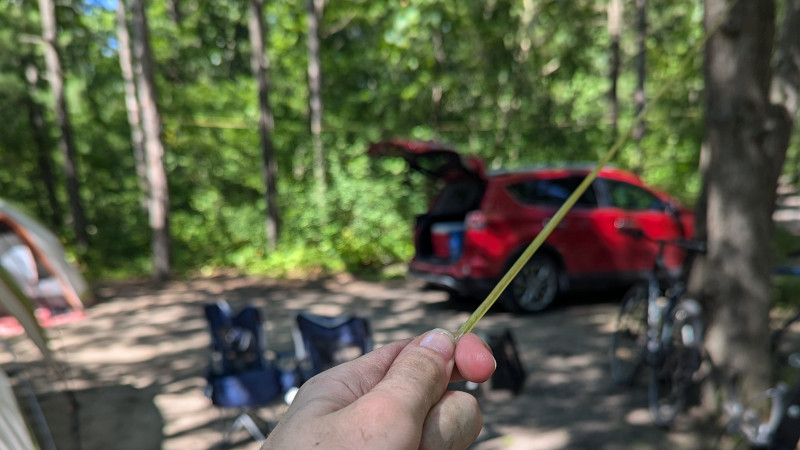There’s an old saying in the amateur radio community that when it comes to antennas all you need is a piece of wet string. This may be a little fanciful, but it’s certainly true that an effective antenna can be made with surprisingly little in the way of conductor. It’s something [Evan Pratten VZ3ZZA] demonstrates amply with a description of the antenna he took camping in a Canadian provincial park.
Most of us would try some form of dipole on our adventures, but the antenna he’s using caught our eye as it’s described as an end-fed half-wave, but it has both a half-wave and quarter-wave element. Made from speaker cable or in this case thin mains cable for lamps, it’s obviously far from a perfect match and requires an ATU, but it generates an impressive array of FT4 contacts on a pretty meagre power level. We particularly like his in-plain-sight test run in the parking lot of a supermarket.
We frequently talk about the diversity of pursuits in amateur radio aside from that of the chequebook ham, and this project shows one of those. The world of QRP, operating at extreme low power, is not expensive to enter and can be extremely rewarding.
















Hey, I haven’t measured it. But I would imagine that the capacitance between those two wires is really high at RF. It might be that just one wire at the longer length works as well.
Double wires? He split the zip cord. Look at the photos. #18 THHN would be a better insulation choice, but for this purpose, wire is wire. The sole personal station I ever had on the air was an Ameco AC-1 with an inverted vee made from blasting wire with a piece of toothbrush handle for a center insulator. It worked.
I bet that made brushing your teeth difficult.
B^)
Just a quick heads up that it’s VA3ZZA, not VZ3ZZA. There are no VZ callsigns in Canada :)
For listening to MW & SW I made a loop out of 80 feet of #14 stranded copper wire soldered to a 20 foot piece of RG8 mini coax, and I just spread it out on the ground at cempsites I visit in a triangle shape
95% de antena, 5% de radio y darás la vuelta al planeta.
There’s nothing magical about a “end-fed half wave.” It is just a well-chosen length of wire with a transformer that matches the antenna impedance to a value that the radio requires. A wide-range antenna tuner can do the same thing. Using a tuner gives you more flexibility – using an EFHW lets you carry less gear. Hams have a lot of choices!
FT4 etc is the new hotness because of how little power you need and how great it is with signal:noise. So to say this Pericles antenna does well with that mode isn’t very helpful. A better comparison would be a “regular” antenna compared to this one or something.
I mean, it got the job done but without a comparison to, say, random length long wire it probably isn’t any better.
Freaking inability to edit plus dumb autocorrect and this is what you get. Apologies.
I do field portable operations my standard antenna for my true SDR is 30 ft of 28 gauge wire 25 ft of light coax and a z-match tuner. And I’m popping contacts both voice and CW all over North America pretty much at any time.